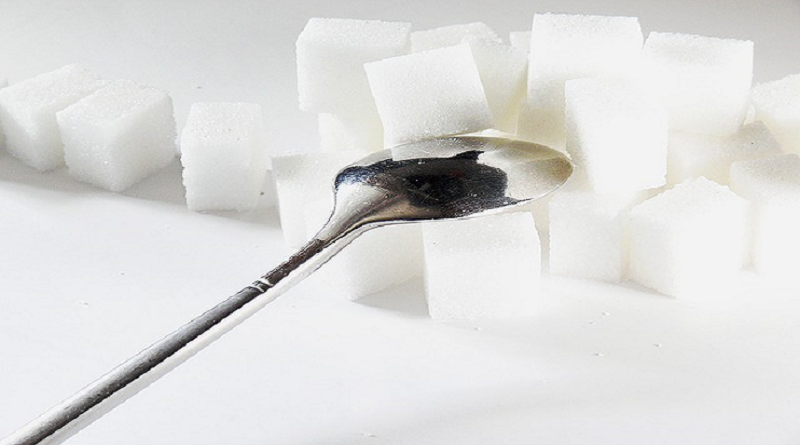Refined Sugar: Damage, History and Substitutes
Among the worst enemies of health of modern man, refined sugar stands out because of the severity of the damage they can inflict and the frequency of use is now made of it.
Sugar (Sucrose), is produced by man after a long mechanical-chemical process (Sugar cane, beet).
In nature there as food, it is present only in the form of fructose in fruit, but the fruit is a organicato element, beneficial and perfectly assimilated, as opposed to industrial is inorganic, not assimilable and very harmful.
It has been introduced in modern power towards the middle of 1800.
Before that they used raw products extracted from sugar cane, in tropical and sub-tropical countries.

In our continent we began to use sweeteners derived from sugar beet, the cultivation of which was commissioned by Napoleon Bonaparte. In any case it was semi-processed sugars obtained with few stages of processing and extraction.
Those over 60/70 years, will remember that the prewar sugar or the First World War had a grayish color, unlike the current white sugar, and was of coarser grain, because it did not undergo all processes “chemical” which undergoes the sugar today, we speak of 5, 6 or 7 passes through chemicals the last of which, today, is to subject it to the action of a brillantante- riflessante, the “ultramarine”.
In conclusion, what we find today on the shelves of supermarkets has almost nothing of plant, almost nothing of the tuber called beet.
What then, the damage it causes refined sugar?
Let’s see: those who eat refined sugar (for example, eats breakfast with sweetened milk coffee, biscuits and jam) is facing a rapid rise in blood sugar that determines → immediate pancreatic insulin overproduction → which in turn lowers your blood sugar, resulting in an → sense of hunger that leads to re-introduce sugars (cappuccino with croissant mid-morning) → but they immediately raise the blood sugar and then insulin, leading to a new phase of hypoglycemia (so you get to lunch with the hole in stomach) and so on in a vicious circle in the long run inevitably it leads to obesity and all the problems connected to it.
In contrast, whole foods help those who want to lose weight, because on one hand the fibers that contain, swell in the stomach and intestines, giving a greater sense of satiety, and the other favoring a slow and gradual absorption of sugars, preventing falls of glucose levels in the blood (blood sugar) that would increase the sense of hunger.
Too quiet may be, from this point of view, those who eat plenty of fruit, because, contrary to what you hear around alas even by uninformed doctors (!!!), the fruit fructose does not cause blood sugar rise because it does not need insulin in its absorption process.
You may also like to read another article on MenHealthCare: Types of Carbohydrates
Some data
Sugar consumption: 2 kg per capita in the early 1900s; 55 kg per capita in 1990.
The updated data to date do not have them, but rest assured that the consumer is definitely increased, and very much !!.
Today the sugar is found everywhere : in the bread, in sausages, in preserves, even in cigarettes (up to 17%), and much, much more.
We learn to read the labels of what we bring home (in Germany are taught to read labels in primary schools).
Another killer effect of refined sugar, or “sweet poison”, is reported by a study of a California University in 1979 and about the negative effects it has on the immune system (moms, read carefully and bring the thought to your little children !)
Well, according to this study, an immune system (white blood cells) in good health usually manages to swallow (to eat up) 14 germs in 5 minutes; after 6 teaspoons of sugar it only 10 jelly; after 12 teaspoons of sugar can only papparsene 5 and, long story short, after 24 teaspoons of sugar ingested fails in 5 minutes to engulf even a single germ.
You will say, but it is almost impossible to take 24 teaspoons of sugar !!
You are sure? Do the math: there are 6 to 10 teaspoons of sugar in a can of drink sweetened (coca-cola, orange, juice etc.). There are 5 or 6 teaspoons of sugar in a croissant, a croissant, a piece of cake.
Then consider the coffee sugar, cappuccino and what Nostra Sister Industry Food Pantry everywhere (bread, sausages, canned food, cigarettes etc.), and you will see that it is not difficult to achieve and even exceed the threshold of 24 teaspoons, which your children will go around with a virtually paralyzed immune system, as well as fat pads that increase on all sides (as we saw earlier).
“But I only use brown sugar”, you say!
Nice stuff, I say! Know that the brown cane sugar that we find now in all bars, refined sugar is simply colorful.
Know that the raw cane sugar that is found in supermarkets is also brown, but has the same glycemic index of white sugar (does raise your blood sugar exactly like that).
Know that the unrefined sugar cane, to darker color, that sticky, that which seems to move on its own when you take it in a teaspoon, is only relatively better, having a glycemic index of 80% compared to refined sugar.
So what we must do to defend themselves from the “sweet poison”?
First of all to know him better, because as says the famous adage, the enemy will fight better if you know him, and I hope that my brief notes will be of help in this regard.
In any case it is essential to commit to reduce its use.
If replacing the sugar learn to do well, and use plenty of fresh fruit, in season and “ripe”, your craving for refined sugar will drop gradually.
You can learn to use as a sweetener of your desserts (those you do at home) the most natural alternative to sugar, such as dates.
When you take “the hole in the stomach” mid-morning or in the afternoon, put in the mouth two raisins or dried fig and let it dissolve slowly, in short, use your imagination and remember that nothing has the value of a beautiful fruit mature to satiate our cells, and especially for children.



